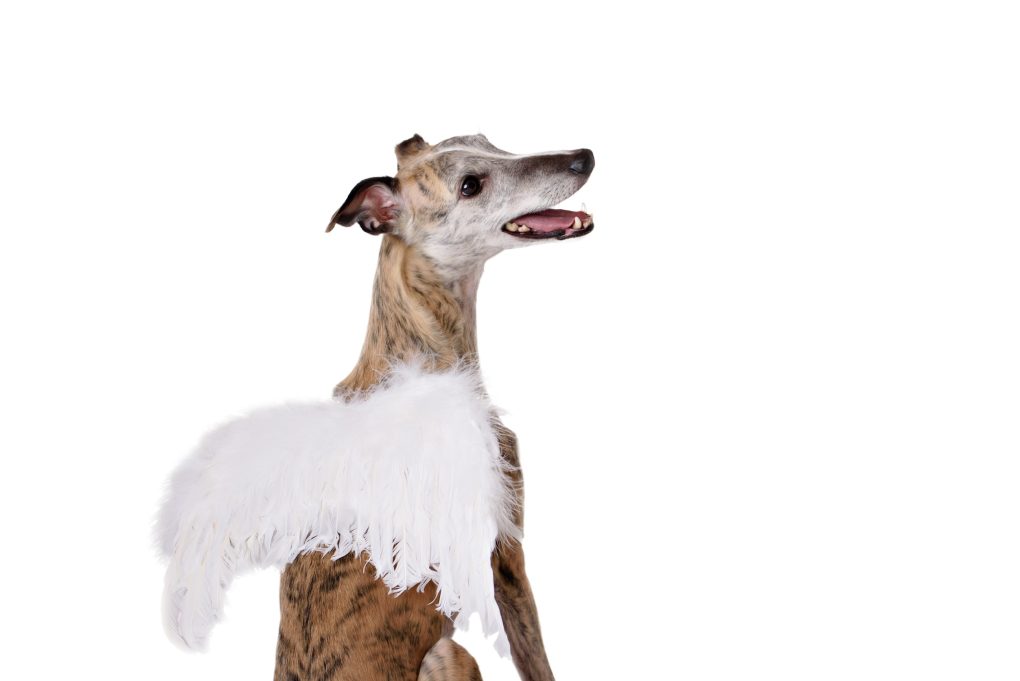Why Is My Whippet Shedding So Much: Reasons Why Whippet Shed and How to Deal With It
Whippets have short, smooth coats that are easy to care for and do not typically shed excessively. However, if your Whippet is shedding a lot, there may be a few reasons for this:
- Seasonal changes: Like many other dog breeds, Whippets can shed more in the spring and fall when their coats are transitioning from one season to another.


- Poor nutrition: A lack of proper nutrition can cause your Whippet’s coat dry, brittle, and more prone to shedding. Ensure your dog gets a well-balanced diet that includes high-quality protein, vitamins, and minerals.
- Skin allergies or infections: Skin allergies or infections can cause your Whippet to shed excessively. If you notice redness, itching, or dry patches on your dog’s skin, you must take them to the vet for a diagnosis and treatment.
- Stress or anxiety: Stress and anxiety can cause your Whippet to shed more. Ensure your dog gets enough exercise and mental stimulation, and create a calm and comfortable environment to help reduce their stress levels.
- Health issues: Certain health issues, such as thyroid problems or Cushing’s disease, can cause excessive shedding in dogs. If you suspect your Whippet may have a health issue, you must take them to the vet for a diagnosis and treatment.
Table of Contents
Reasons Why Your Whippet Is Shedding So Much
Nutrient Deficiency
Whippets require the right amount of nutrients to maintain healthy fur. When fed a balanced diet, they will not experience nutrient deficiency and will have a healthy coat. However, excessive shedding can occur if they are not fed the correct diet. This is why feeding your Whippet a balanced diet that includes all the necessary nutrients is essential.
Signs of nutrient deficiency in whippets include poor hair coat and Shine coat and skin. If you notice these signs in your Whippet, it may be time to feed them a more suitable diet.
Bad Shampoo
Shedding is natural for dogs, according to PetMD, and a healthy dog will shed hair continuously as it grows back. However, some factors can cause your dog to shed more than usual. One such common factor is grooming products. Some groomers use human-grade grooming products, often too harsh for dog skin. This can lead to excessive shedding and skin problems.
Another common cause of excessive Whippet shedding is the type of shampoo you use. Often, dog shampoos contain unnecessary chemicals that can dry out the dog’s skin and lead to excessive shedding. To help reduce Whippet shedding, choose a shampoo made specifically for dogs.
Opt for a shampoo with oatmeal or aloe vera to help ensure your dog’s skin stays healthy after a bath. If you’re regularly grooming your dog, consult your vet about introducing new meals without creating health problems. Lastly, proper care and maintenance can help reduce Whippet shedding.
Time of Year
It is common for whippets to shed during the year, but it can be more pronounced during certain times. In particular, shedding can be more intense in spring and fall due to changes in the Whippet’s environment.


Temperature changes can also affect how much a whippet sheds. If owners notice their pet’s shedding patterns changing seasonally, it could be a sign that something is wrong and require medical attention. Shedding is inevitable in dog health and maintenance, but owners should keep an eye on their dog’s shedding patterns to ensure there isn’t any seasonal variation.
Ticks, Fleas, and Mites
Fleas, ticks, and mites can cause Whippet owners to deal with excessive shedding. These parasites can lead to excessive itching, grooming, and scratching. Pest infestations can contribute to hair loss as a result of the location of the mites on the dog’s body. In addition, fleas and ticks usually contribute to shedding due to the increased itching, whereas mites usually cause hair loss.
To treat these pests and prevent excessive shedding, it is essential to groom your dog regularly and use flea-control products. However, treat your dog appropriately if you notice signs of toxicity or diarrhea. This could lead to adverse side effects or even death. Instead, use flea-control products safely and regularly to ensure your Whippet’s health and happiness.
Not Enough Grooming
Whippets are typically low-maintenance pets but may require grooming to remove loose hair. Regular grooming is vital for whippets to keep their coat looking clean and healthy. While brushing and brushing is generally enough, some breeders brush their Whippet’s coat with a special brush designed especially for grooming dogs. This helps to remove dirt, fleas, and other parasites causing excessive shedding.
Thorough grooming will help to remove loose hair from your Whippet’s coat and reduce the amount of shedding it produces. If your Whippet is shedding excessively, a health problem may require medical attention. In this case, it is crucial to seek the help of a professional dog groomer. Regularly grooming your Whippet can help ensure its healthy and shiny coat.
High Stress
Various factors, such as high-stress levels, environmental changes, or allergies, can cause excessive shedding. To reduce your Whippet’s shedding, working with a veterinarian to identify the underlying cause and address it accordingly is essential.
In some cases, steps can be taken to reduce your Whippet’s shedding and improve its coat health. For example, grooming your Whippet regularly can help keep its coat clean and healthy. Feeding a high-quality diet can help support your dog’s health and overall well-being.
Dehydration
Whippets are known to be hair-shedding dogs. However, excessive shedding can be a severe health concern for these dogs. Some common causes of whippet shedding include dehydration, low levels of thyroid hormones, poor grooming, and poor diet. If your Whippet is losing too much hair, it could be a sign that it is dehydrated or suffering from other health problems.
To prevent excessive whippet shedding, it’s crucial to provide them with plenty of fresh water to stay hydrated and healthy. Additionally, ensure they are groomed regularly to reduce the risk of hair loss and maintain their healthy appearance.
Health Condition
If your Whippet is shedding excessively, it may be due to a health condition. Cushing Syndrome, Hypothyroidism, and other health conditions can affect a whippet’s ability to regulate hair growth. If your dog is shedding more than usual, it’s essential to take them to the vet for a check-up. You can also groom your dog regularly to help reduce excessive shedding.
Additionally, it’s crucial to ensure your dog receives the proper care and treatment for any health problems it might be experiencing.
Tips to Help Your Whippet Shed Less


Start Grooming More Often
Regular brushing will help remove dead hair and help your Whippet maintain a clean and healthy coat. Additionally, grooming your Whippet includes brushing their teeth a few times a week to keep their teeth and gums healthy and clean. In addition, shedding can occur more frequently in dogs with underlying medical conditions such as Cushing syndrome or hypothyroidism.
If you notice your Whippet shedding more than usual, check for any sore spots or injuries on him, as licking can cause increased shedding. Besides grooming, regular exercise and a good diet will also help reduce shedding.
Change Their Diet
One of the best ways to help whippet shedding become less frequent is to change their diet. Dogs require a balanced diet that includes proteins, vitamins, and minerals to stay healthy. An unbalanced or poor diet can lead to skin and coat problems, increasing shedding in whippets. Therefore, owners must provide them with a balanced diet that includes proteins, vitamins, and minerals.
While whippets do not require baths to reduce shedding, regularly brushing their coats and removing dead hair from their bodies is still a good practice. This will help keep your fur babies looking and feeling clean and healthy.
Additionally, regular bathing can help promote healthy skin and coats in whippet dogs. But if you decide to bathe whippets, use safe shampoo and only dip them into cold water for a short time, preventing them from getting chilled.
